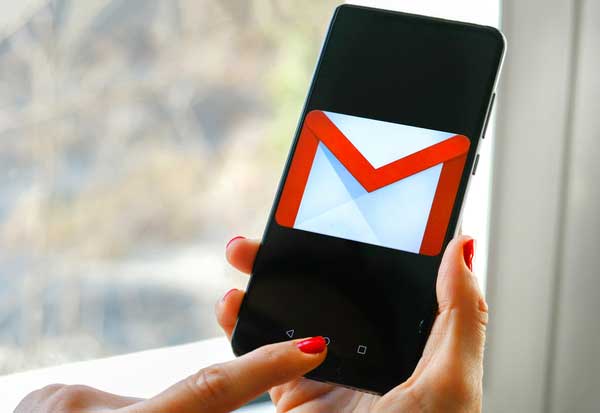Gmail’s popularity is rapidly declining. In September 2021, Gmail controlled 35.25% of the email client market share. However, by October 2022, their share had fallen to just 27.95% – a massive drop of 7.3 percentage points in only 13 months. With approximately 4.26 billion email users worldwide, this means Gmail has likely lost over 306 million users or seen slower adoption growth compared to alternative services. For over 15 years, Gmail has been the consensus top email service – whether for personal, business, or other uses. Yet in 2022, they lost one-fifth of their market share. So what happened to make Gmail go from the default email choice to losing droves of users?

The Original Appeal of Gmail
To understand Gmail’s declining popularity, we first have to examine why it became so popular originally. And for that, we go back to April Fool’s Day 2004 when Gmail first launched…as an apparent prank. Offering 1GB of storage seemed laughable compared to Yahoo and Hotmail’s 2-5MB. Even Google’s own Sundar Pichai thought Gmail was a joke when asked about it during his interviews. But Gmail was very much real and would soon cement itself as the most desirable email service. In 2005 they boosted storage to 2GB, and by 2007 it was 4GB. Moving from paltry 2-5MB allowances to multiple gigabytes made Gmail a game changer. No more email archive tetris – Gmail could handle anything you threw at it storage-wise. But storage wasn’t Gmail’s only advantage. It also had superior spam filtering, UI, grouping, and search capabilities the competition lacked. However, not everyone could sign up instantly due to the limited rollout. Gmail’s initial invite-only access increased demand further. If you had a Gmail account, you were seen as one of the cool tech-savvy kids. It took nearly 3 years after launch before Gmail opened registration to all. By then, pent-up demand led to an influx of new adopters. Institutions like universities also jumped aboard thanks to custom domains, unlimited storage options, zero scheduled downtime, and exceptional support. For schools, businesses, and personal users alike, Gmail was clearly the top choice email platform.
Gmail’s Forced Adoption Strategy Backfires
Voluntary user growth began slowing down, so Google turned to more forceful adoption strategies throughout the early 2010s – with mixed results. For dedicated Google ecosystem users, changes like mandatory Google+ profile creation when opening a new Gmail account seemed harmless. But for holdouts, this approach was often quite irritating. Nowhere was this backlash more evident than with the Google+ integration. Google’s failed Facebook competitor that they tried shoehorning into YouTube and other services despite widespread criticism. YouTube co-founder Jawed Karim’s famous 2013 comment of “Why the f*** do I need a Google+ account to comment on a video?” summarized many people’s frustrations. Yet Google persisted with this forced crossover until finally relenting in 2015 after Google+ languished. Similar grievances emerged across Google’s portfolio as they aggressively pushed account unification. Want to use Google Drive or Play Store? Need a YouTube account? For anything Google-related, a Gmail was mandatory whether you actually wanted one or not. Third-party services also increasingly supported convenience “Login with Google” options. While handy for some, this additional entanglement only made it harder for reluctant users to avoid joining Google’s ecosystem. Schools eager to utilize services like Google Ads and Google Calendar faced campus-wide account requirements for students and staff. Using Google services without an account was technically possible but impractical. Just like trying to use AirPods on Windows, it was a compromised experience.
The Turning Tide Against Gmail’s Dominance
Despite Google’s aggressive adoption efforts, their email stranglehold is now slipping substantially. So what happened? Google simply ran out of winning strategies. One original Gmail trump card was storage volume, but competition has more than caught up. Outlook now provides 15GB for email alone plus additional OneDrive storage – easily beating Gmail. Scarcity also boosted early interest, but ubiquity has normalized Google accounts removing any special aura or excitement. Institutions increasingly eye renewed Outlook adoption for easy Microsoft Office 365 integration – a weak spot for Gmail. On the business front, Outlook dominates especially in enterprise settings with nearly 196,000 corporate domain users versus Gmail’s 4,400. Apple’s privacy-focused Mail Privacy Protection launch also aligns with growing consumer wariness regarding big data’s invasive tracking and collection. By sticking with default iPhone mail over Gmail, users gain protection without changing habits. This privacy pivot appears to be resonating as Apple Mail increased from 50% to nearly 60% market share in one year. Other privacy leaders like Signal for messaging and BeReal social networks echo a growing desire to escape the secondhand data economy.
Final Thoughts on Gmail’s Future
Gmail still enjoys strong inertia as an essential Google account component for most internet users. However, for email itself momentum favors alternative clients offering comparable features without the privacy concerns. Between closing feature gaps, shifting institutional preferences, and tapping into data security anxieties, Gmail has struggled to expand its appeal leading customers to readily switch when viable options emerge. As tech attitudes mature from naivety to informed self-interest, companies respecting user priorities stand to prosper. That’s why I expect Gmail’s popularity decay to continue absent major reforms reestablishing aligner incentives around privacy and transparency. But those are just my thoughts – what’s your email service outlook? Let me know in the comments and be sure to subscribe for more tech analysis!
